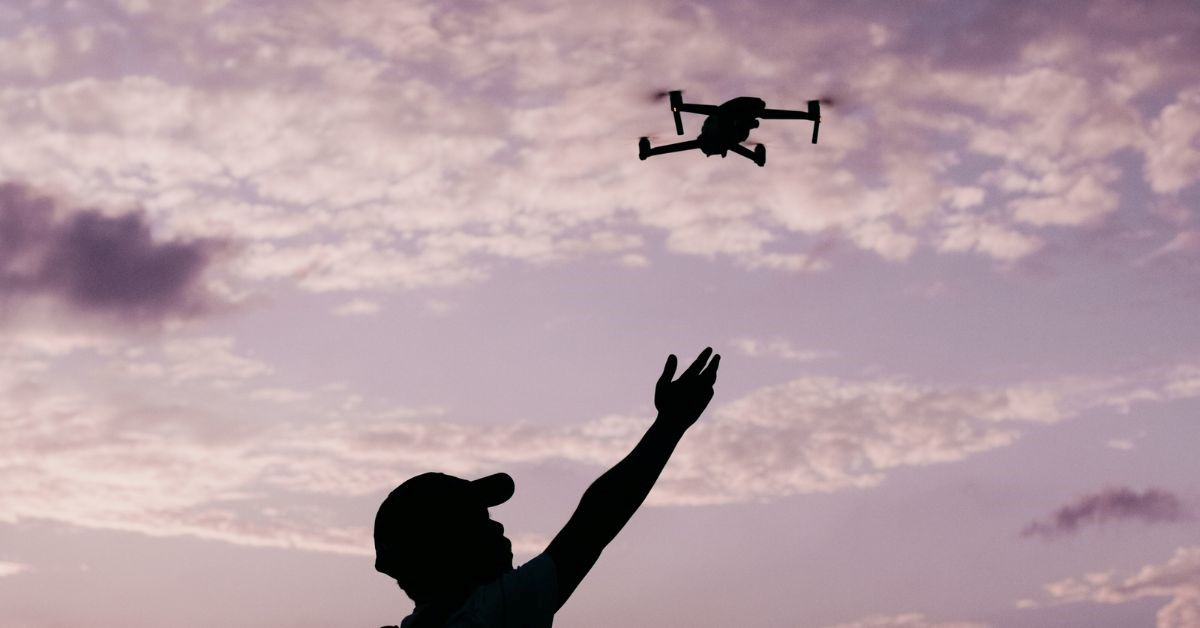How Drone Technology Benefits the Military Industry

Military drone technology has been proven effective in several ways. As a result of its ability to provide real-time video and other data from inaccessible or dangerous regions, situational awareness, and intelligence gathering have been considerably enhanced.
Drones’ adaptability has led to their use in many military applications, including search and rescue, logistics, transport, and border security. Understanding drone monitoring systems can be beneficial, especially if you want to dig deeper into how this top-of-the-line technology can further enhance military drone integration.
What Are the Functions of a Military Drone?
The military mainly uses drones for surveillance and intelligence gathering. On top of that, its functions are not limited to the human mind. With the improvements in security, efficiency, and efficacy that drone technology has brought to current military operations, it has quickly become an indispensable military instrument.
1. Reconnaissance
Drones with high-resolution sensors and cameras can generate real-time intelligence on the positions and movements of the adversary, making them useful for reconnaissance and surveillance missions. Such data is essential for military planners looking to minimize risks during operations.
2. Combat Assessments
Military drones are highly adaptable for border enforcement, keeping an eye on post-war damages. Evidence from above demonstrates the success of offensive military operations through images and video recordings.
Drone technology has radio signals that allow transmission for photos and even real-time video footage, which is highly effective for combat assessment. The process for this assessment is faster, more efficient, accurate, and less tedious.
3. Military Search and Rescue
The military use drones with thermal cameras and other sensors to search for missing people and evaluate damage after an emergency. For instance, ZenaDrone 1000 has thermal detection that allows users to detect any life forms in restricted and remote areas like collapsed buildings, forests, mountains, and more, providing more accessible and faster access for search and rescue.
4. Safety Enforcement
Relying on drones for reinforcement, especially in risky areas, has provided aid to the military since they can continue operations without further risking personnel.
The ability to secure both victims and rescuers has streamlined better and more safe enforcement methods with the help of military drones. Military drones can take 42 hours of flight time, helping you streamline better and more secure enforcemen
5. Quick-paced Data Collection
Effective administration of drone data, such as flight records, images, and other sensor data, is essential for integrating drones into military operations. Military drones operate with GPS.
Drones rely on this technology to navigate and hover, making data collection more accurate. Military organizations should develop a complete data management system to store, analyze, and disseminate this data safely and effectively.
6. Law Compliance
There are a variety of domestic and international laws and regulations that must be followed while using drones for military purposes. Law compliance includes:
- Keeping drones out of restricted airspaces.
- Keeping them away from potentially dangerous situations.
- Keeping them away from other aircraft.
It is crucial to have a workforce familiar with these laws and regulations and knows how to operate drones following them.
How Can the Military Integrate Drones?
The use of drones in military operations has the potential to increase situational awareness, enhance target acquisition, and decrease collateral damage and casualties.
There are, however, several obstacles to overcome when incorporating drones into military operations, including the necessity of adequate training, the maintenance of legal compliance, and the prevention of cyber attacks.
The benefits of drones can be promising. That’s why you need to keep in mind the following factors before you integrate:
- They can have high-quality camera systems for crisp footage.
- They should have long flight times with durable built-in batteries.
- They should have simple navigation systems for simple integration.
- They may have customizable attachments for extensive use.
- They should have carbon fiber bodies for more durability.
Remember that successfully integrating drones into military operations requires meticulous planning and execution. Military organizations must take many critical steps to guarantee that drones are being used effectively to support their missions.
Revolutionizing Military Operations With Drone Technology
Drones have profoundly affected military operations, transforming how soldiers collect intelligence, carry out surveillance, and launch attacks. The military has benefited from remote control of drones because it has expanded situational awareness, enhanced targeting precision, and decreased risk to soldiers in inaccessible or hostile environments.
Further, UAVs with high-tech sensors and cameras can report back in real-time, empowering military brass to make more innovative, more timely judgments. Drones have also allowed operations to be carried out in war zones with minimal risk to civilian populations and significantly reduced collateral damage.
The effectiveness of drones can streamline the following:
- Assistance in reaching previously inaccessible locales
- Savings in both human resource and fuel costs
- Safety and monitoring improvements
- Increased precision in mapping and geographic data collection
- Better crop management and farming techniques
- Enhanced methods of rescue and search
- Improvements to the effectiveness of infrastructure and facility inspection and maintenance
The future of drones in the military is endless. Military drones will likely continue developing in terms of technology, capabilities, and integration into military operations.
The use of drones for offensive and defensive purposes is one example, but other developments in autonomous systems, AI, stealth technology, and similar areas are also possible. It’s also conceivable that drones will be more compact, expand in capabilities, and become more commonplace in the military.
The Bottom Line
Each drone is custom-made to perform a specific function. It offers an adaptable hardware and system interface that you can use in many different fields, especially in the military. With these things in mind, you can streamline better and more effective performance, especially in revolutionizing drones as an assistive tool in the military sector.
Contact Us
Thank you for your message. It has been sent.
Latest Posts
Social Profiles















